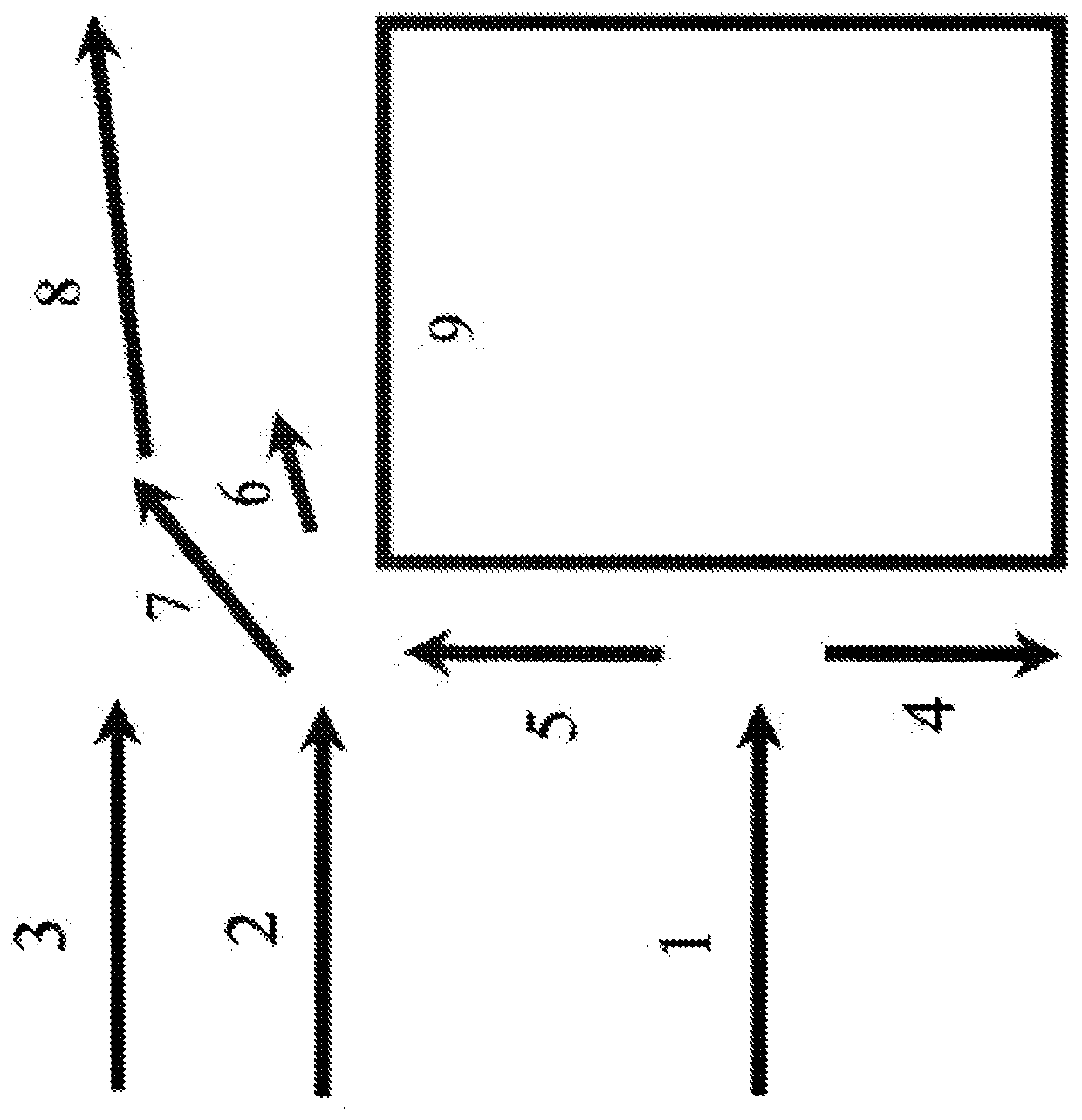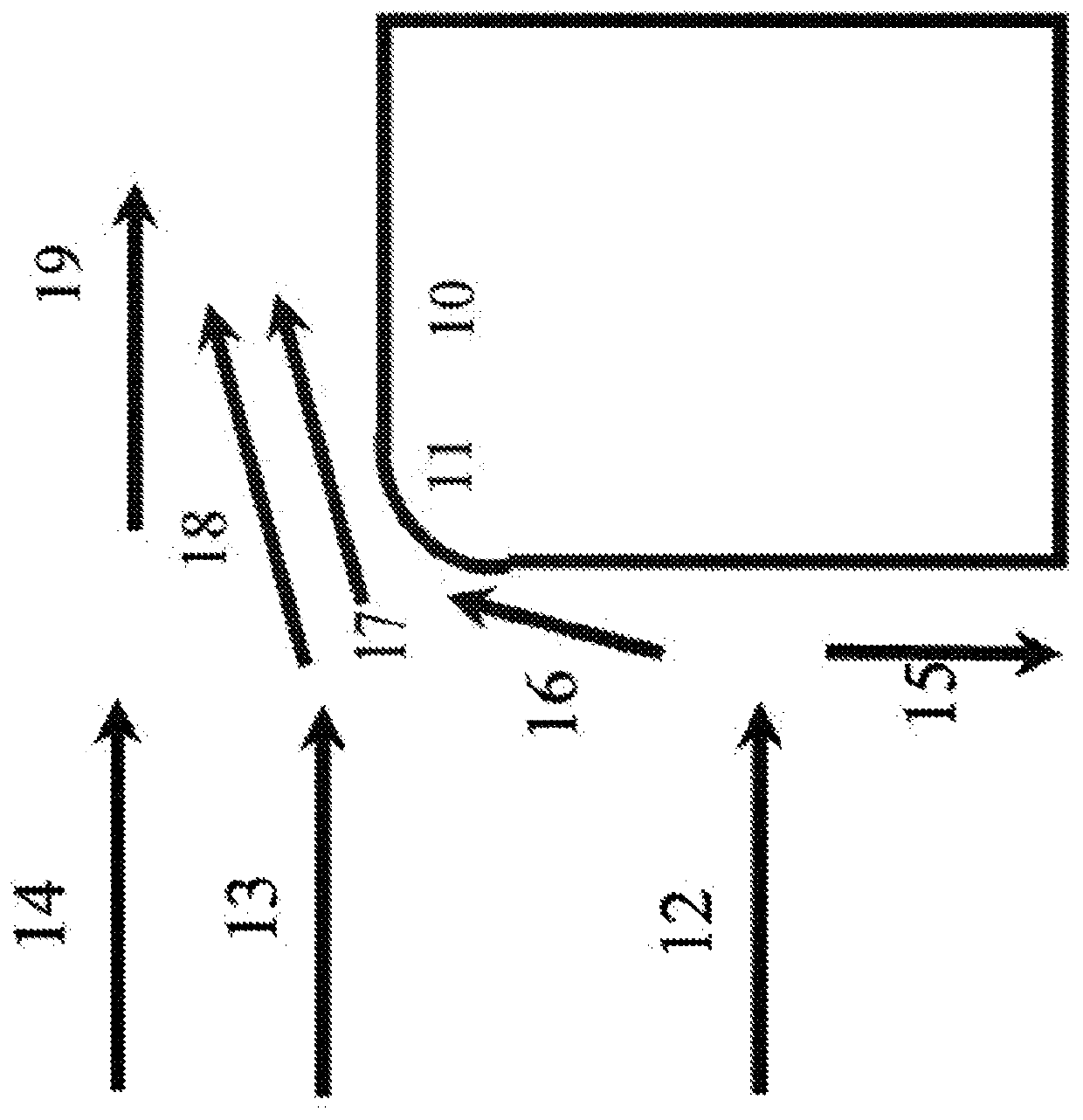Rooftop wind turbine flow improvements
A turbine and vertical flow technology, applied in the direction of wind turbines, installation/support configuration of wind turbines, combination of wind turbines, etc., can solve problems such as no solution, degradation of turbine unbalanced force, low power, etc.
- Summary
- Abstract
- Description
- Claims
- Application Information
AI Technical Summary
Problems solved by technology
Method used
Image
Examples
Embodiment Construction
[0053] The invention makes the wind power of the roof more practical and solves the problem of wind deformation caused by buildings on the roof.
[0054] Definition: For the sake of specific language, a roof is called a platform in the claims, meaning a flat surface higher than its surroundings, and the side of the building as a vertical surface, even if it is not exactly at 90 degrees. This was done to make the principles general enough to be applicable to many situations, such as underwater turbines for underwater platforms or buildings with atypical shapes. Downstream is the same as downwind; it means the area further in the direction of flow.
[0055] The principles and operation of manufacturing a roof-contained wind turbine by removing obstructions and turbulence in accordance with the present invention may be better understood with reference to the drawings and accompanying descriptions.
[0056] The present invention solves the problem of buildings creating flow obsta...
PUM
 Login to View More
Login to View More Abstract
Description
Claims
Application Information
 Login to View More
Login to View More - R&D
- Intellectual Property
- Life Sciences
- Materials
- Tech Scout
- Unparalleled Data Quality
- Higher Quality Content
- 60% Fewer Hallucinations
Browse by: Latest US Patents, China's latest patents, Technical Efficacy Thesaurus, Application Domain, Technology Topic, Popular Technical Reports.
© 2025 PatSnap. All rights reserved.Legal|Privacy policy|Modern Slavery Act Transparency Statement|Sitemap|About US| Contact US: help@patsnap.com



